When it comes to photographing wildlife and nature, there’s no doubt that more expensive cameras and lenses give you better results than cheaper options, but I was curious to know how much better those results are. So I took four cameras to the Bronx Zoo, comparing setups ranging from about $600 to almost $3,600. The results were surprising.
So surprising, in fact, that it’s worth starting with some images. Can you match the four shots below to their cameras? Your choices are:
- a $3,600 combo, the prosumer Canon 7D Mark II with the pro 100-400mm “L” Mark II lens (160-640mm equiv.);
- a $1,500 pro Fuji X-T1 with the pro 18-135mm lens (about 28-200mm equiv.);
- a
$700$500 consumer all-in-one, the Panasonic Lumix DMC-FZ1000 (25-400mm equiv. zoom); - and the
$600$500 consumer Nikon Coolpix P900 (mind-boggling 24-2,000mm equiv. zoom).
(The answers are here. Prices are approximate, before tax, as of June, 2017 January, 2019.)
Here are the images:

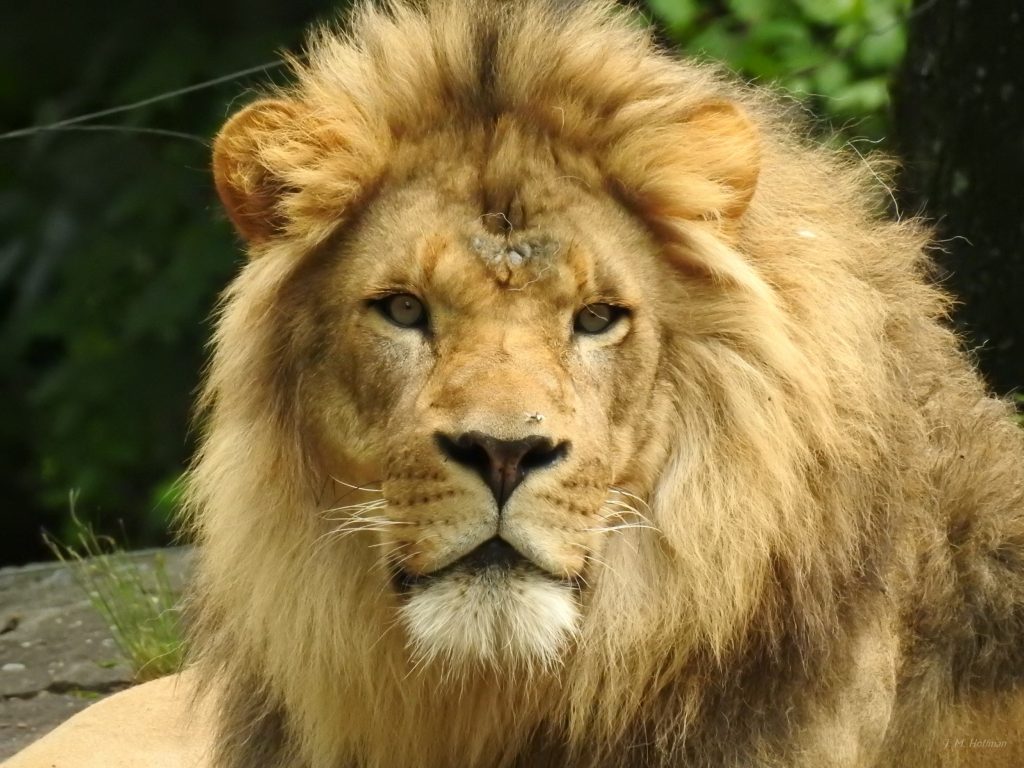
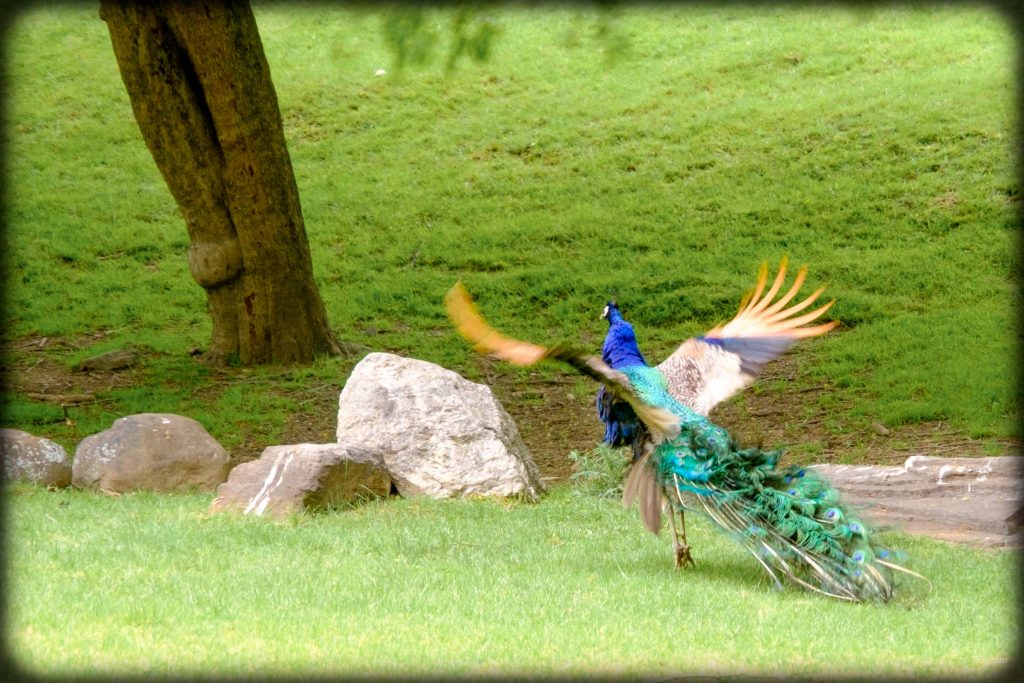
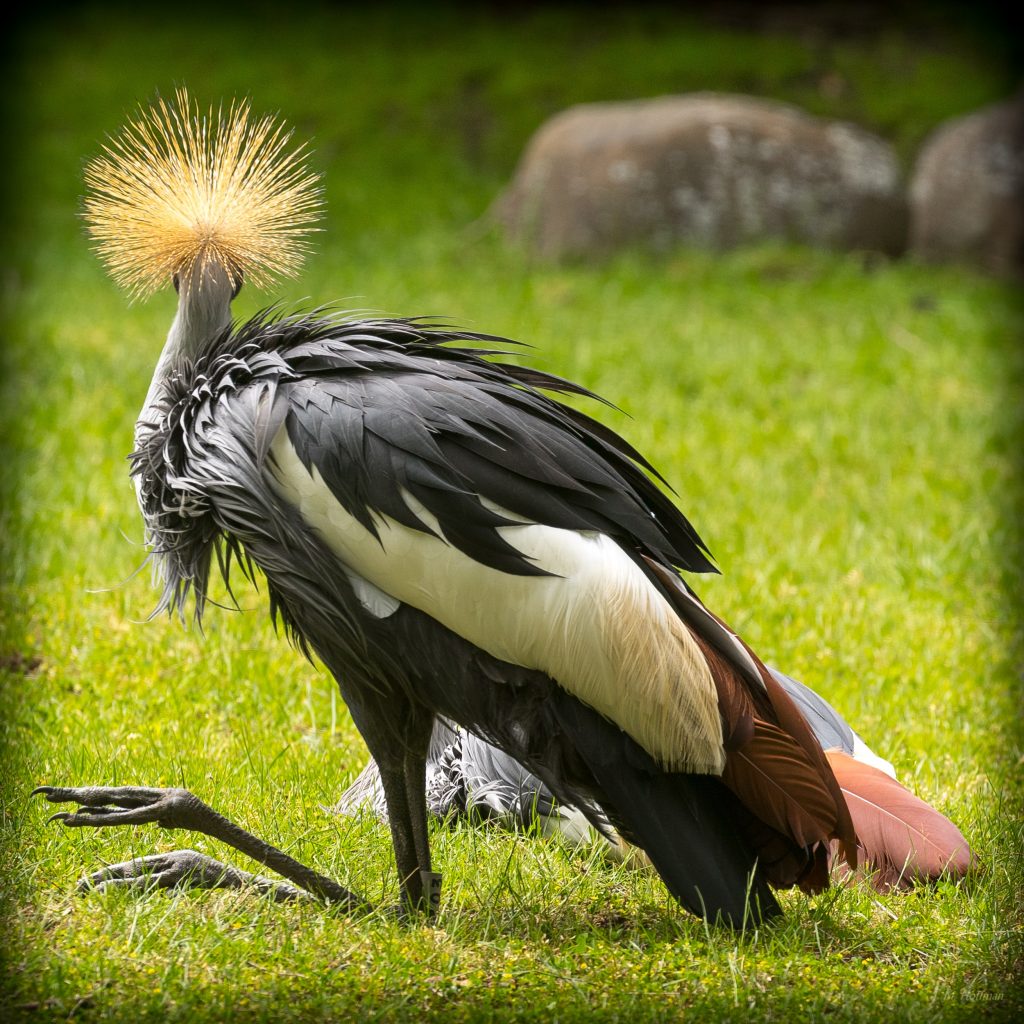
(Again, the answers are here.)
Clearly — at least for screen resolution — all four cameras take great photos. Any flaws in these shots are the fault of the photographer and do not reflect limitations of the cameras.
A Head-to-Head Comparison
That’s not to say that all four cameras are the same. Here’s a more direct comparison, and we certainly see differences. (I lowered the saturation of the grass in all four images. You may or may not like the effect.)
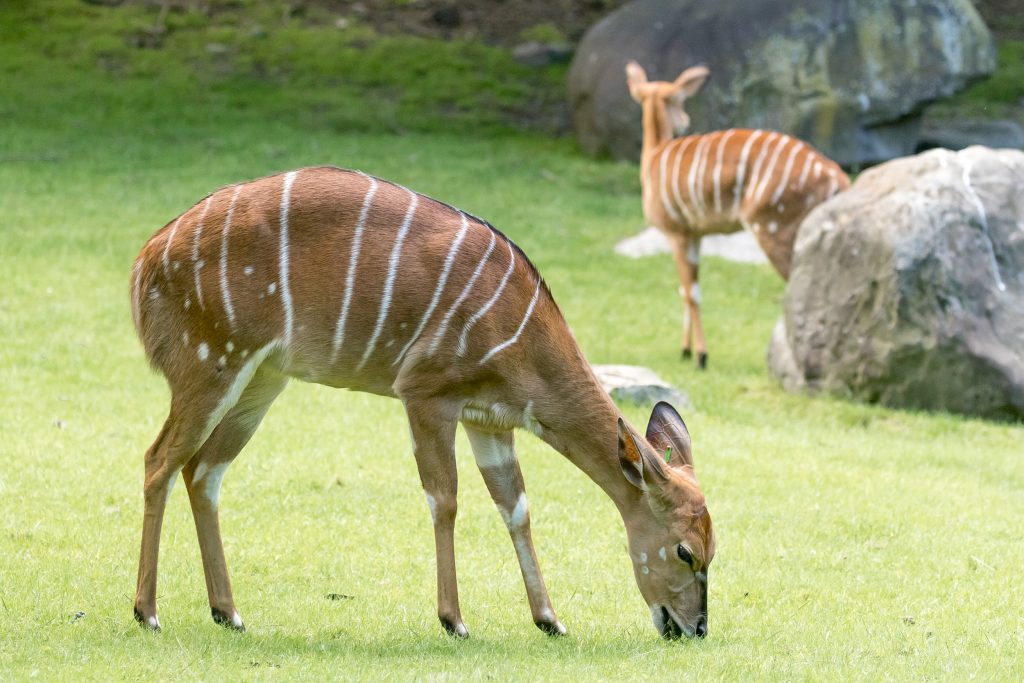
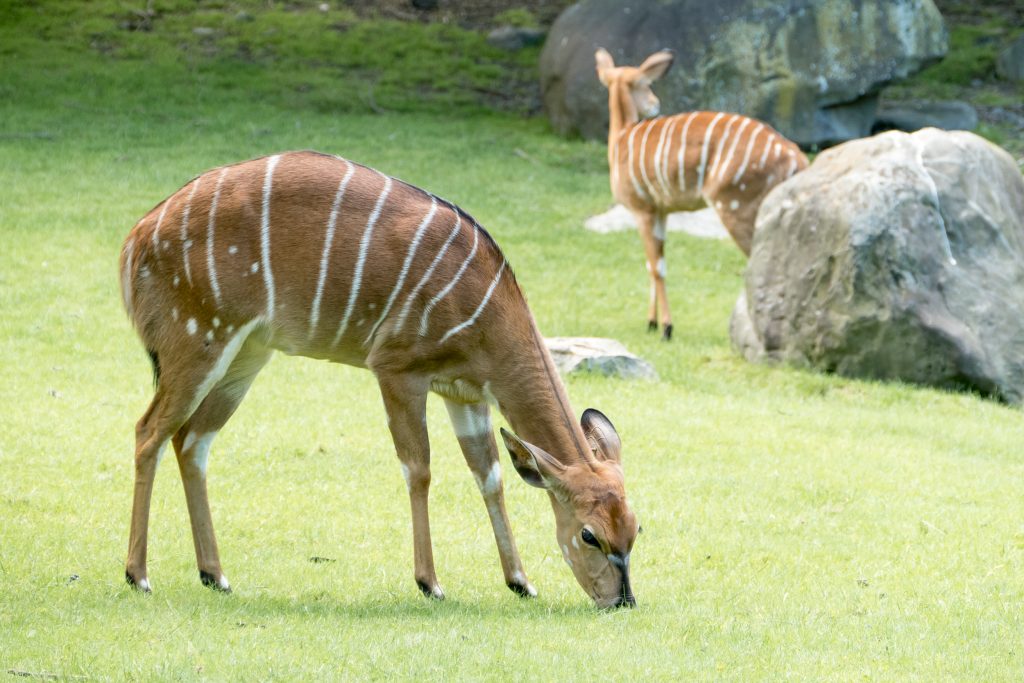
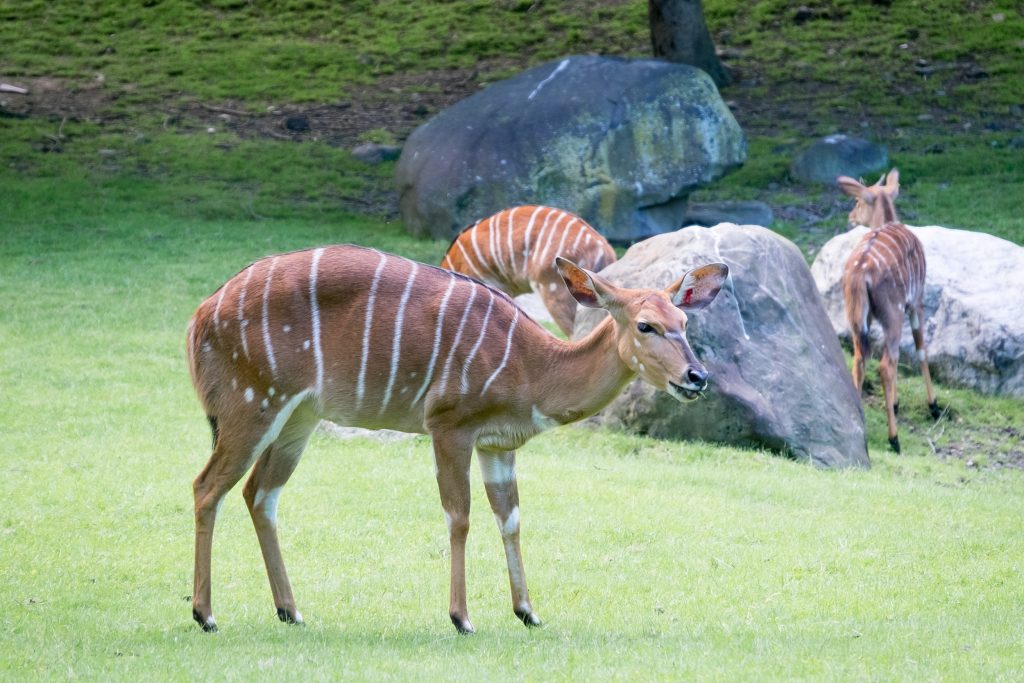
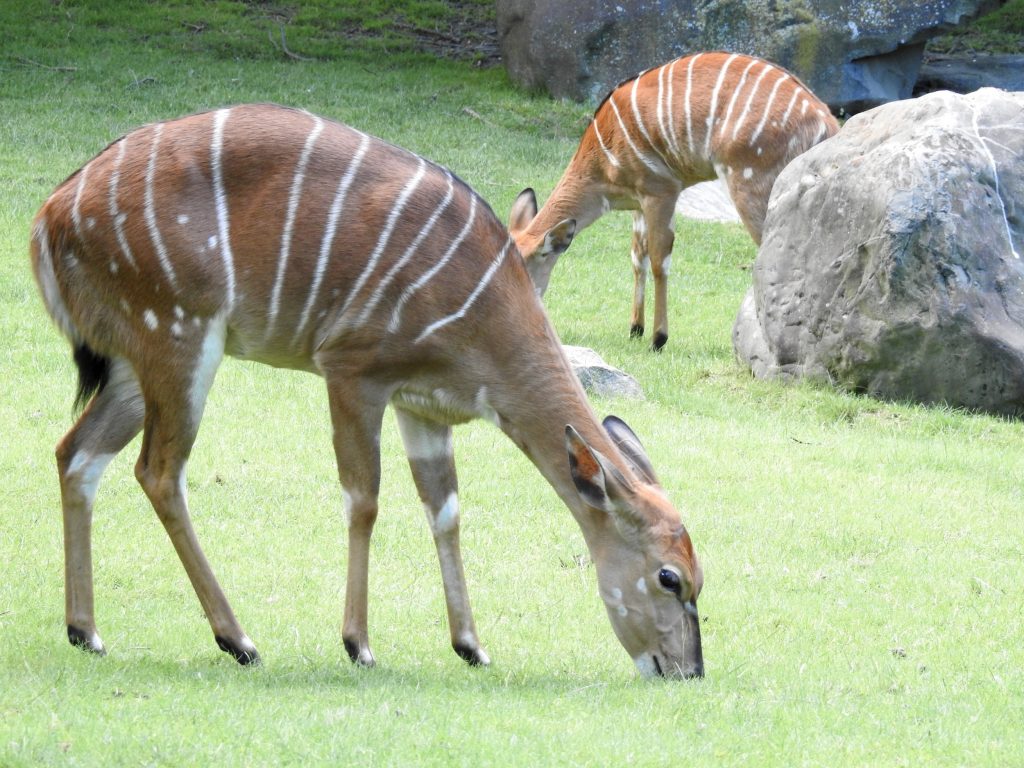
Again, all four images look good. But the Canon 7D (first image, $3,600 combo) is clearly the winner. There’s more detail in the front deer, and the second deer, in the background, is nicely out of focus so as not to be distracting. There would have been even more detail in the main subject if I’d shot at a lower ISO.
Perhaps surprisingly, the Panasonic FZ1000 (second image, $700) also produces a remarkably good image, with lots of detail in the fur and a background that, while not as unfocused as from the Canon, is still not too distracting. Interestingly, the Program mode, which I used here, selected 1/100th of a second for the shutter speed, keeping the ISO down to 320, but risking motion blur. Here’s a side-by-side comparison between the Panasonic and Canon:


The Fuji X-T1 (third image, $1,500) also does a great job, for the same reasons: detail in the foreground (though not quite as much as there should be because I missed focus) and blur in the background (though a bit more would have been nice).
Mostly, what we see here is the real weakness of the Nikon P900 (fourth image, $600). While the first three shots are pretty good, and while you can make out some detail on the front deer in this fourth shot, nothing here is out of focus. As a result, this isn’t so much a nice image of one deer as it is a poor image of two. (But don’t give up on the P900 yet. Keep reading.) Like the Panasonic, the Program mode, which I used here as well, opted for a low ISO at the risk of motion blur, in this case, with a shutter speed of 1/60th second.
A Second Comparison
We see the same story in this series of lion shots, this time comparing JPG images from the camera:
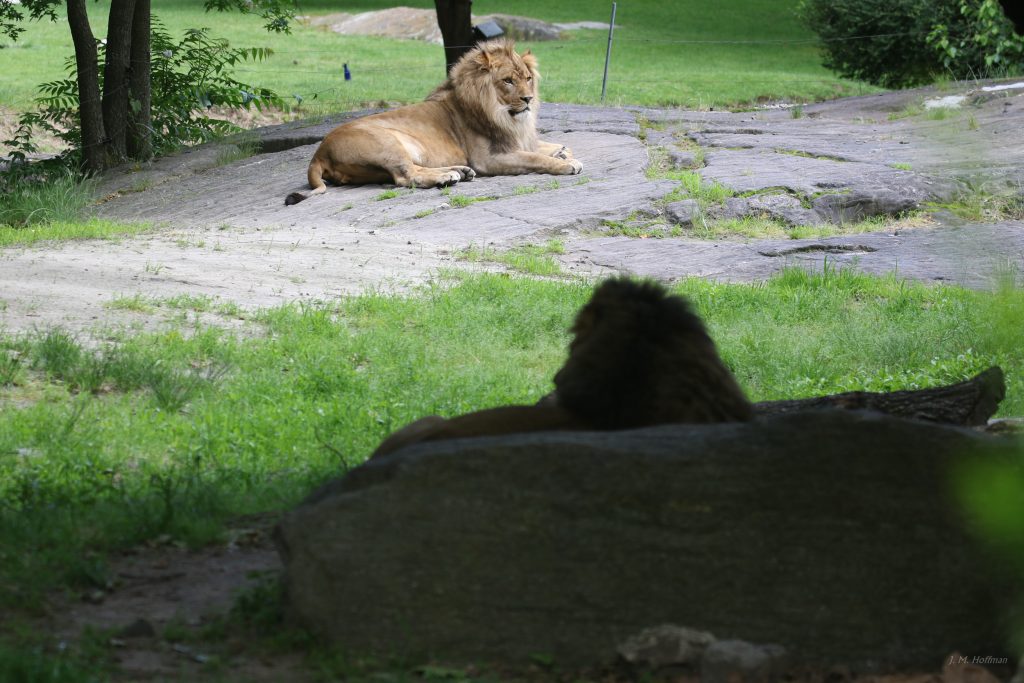
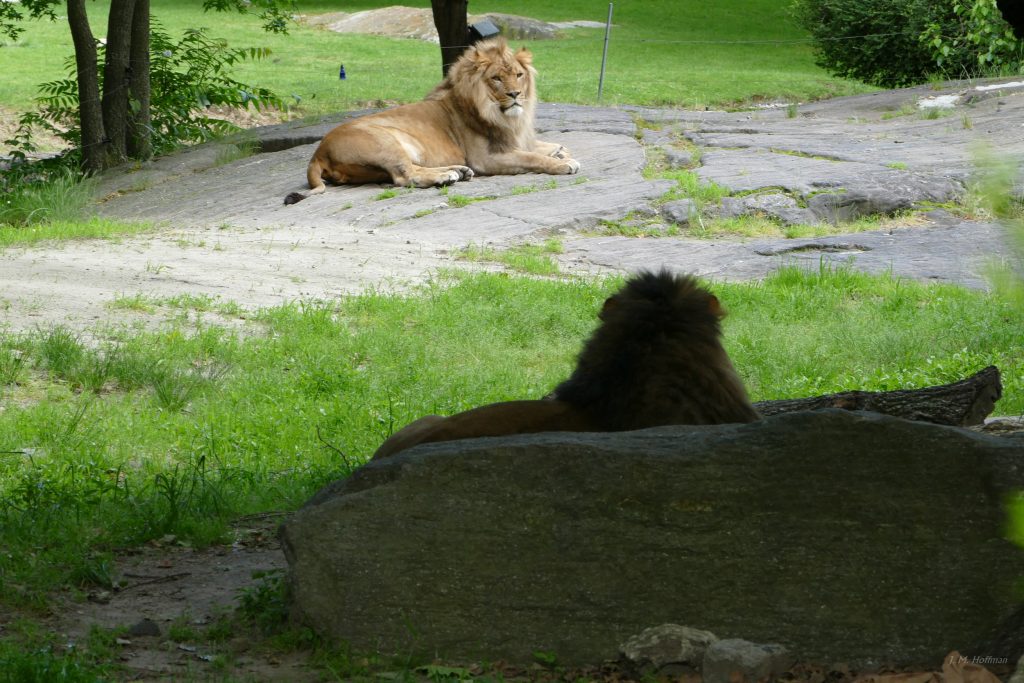
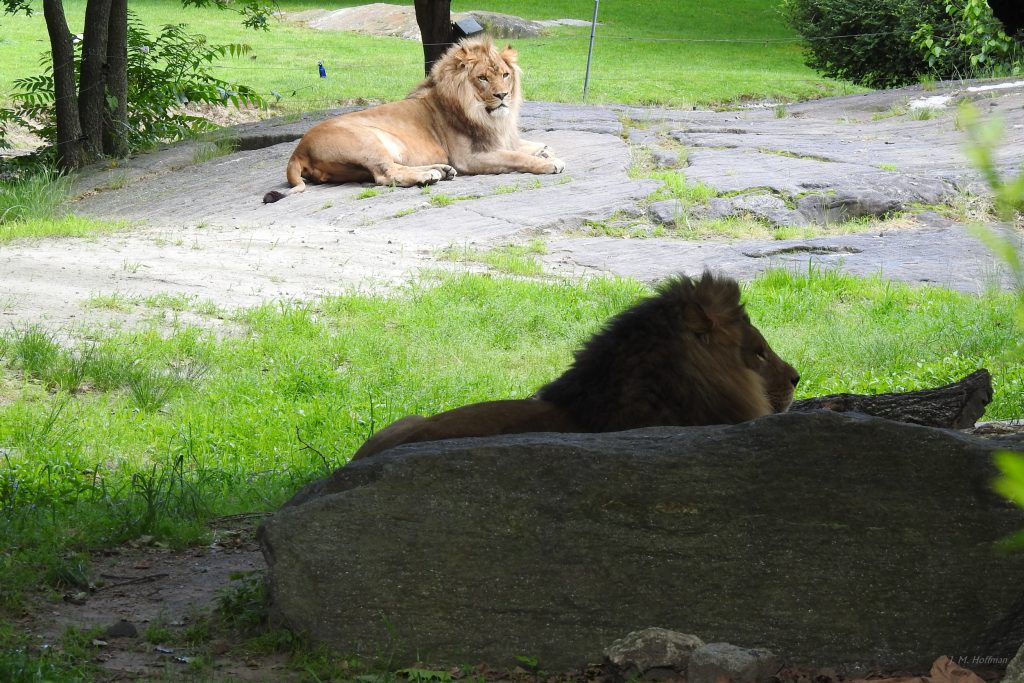
All three images are fine. Again, the Canon does the best job focusing attention on the subject, with a nicely blurred foreground. At the other end of the spectrum, the Nikon has so much depth of field that the details are visible in the foreground too. Surprisingly, the Nikon did the best job exposing for the subject here. Here’s a direct comparison that shows what you give up with the Nikon:


Particularly the Panasonic and Canon images seem pretty close. And they are. But only if we view the full images. What if we crop in? Then we find pretty dramatic differences:
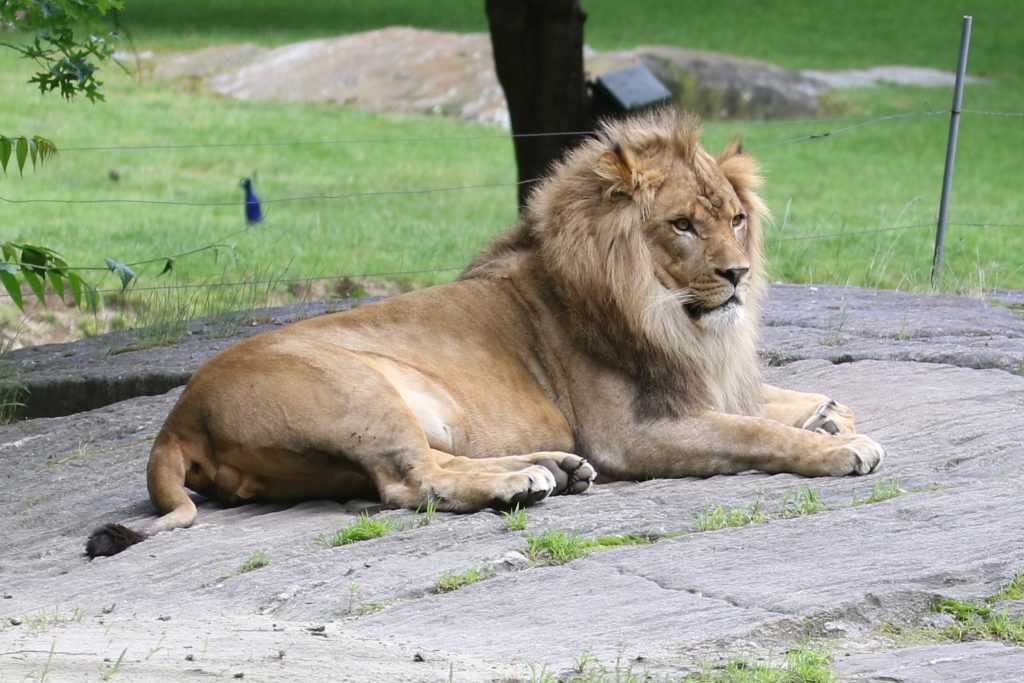

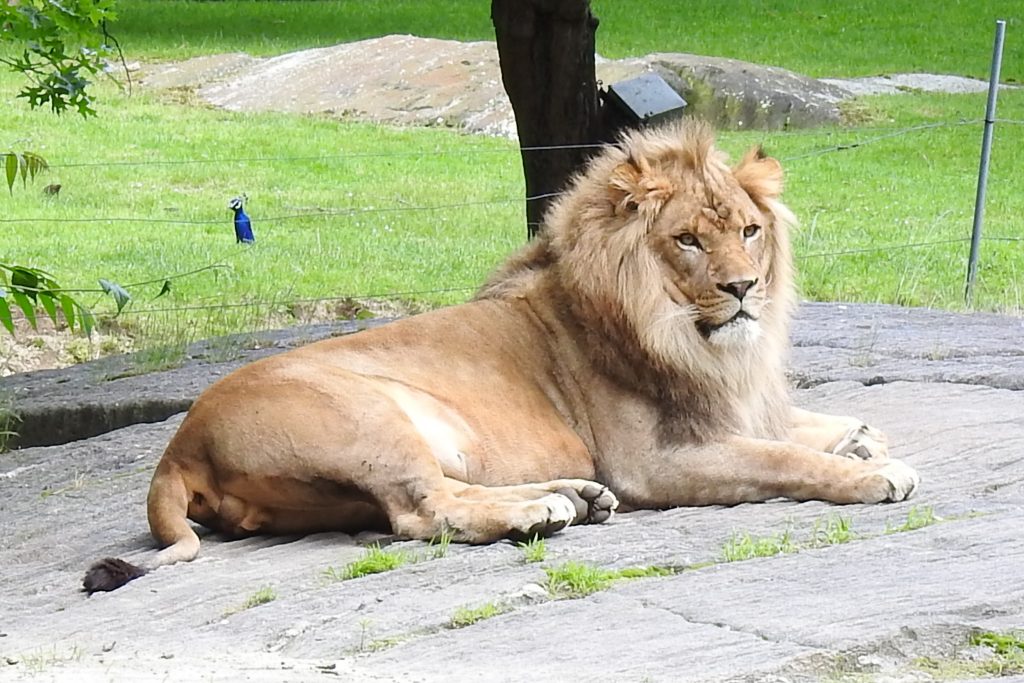
Here we see that that Canon image holds up very well, its 20MP sensor and tack-sharp pro lens capturing enough detail to support a severe crop. The Panasonic image is blurry, not because of any focus issues, but rather because its sensor/lens combination can’t capture detail at this level. And the Nikon image is a mess. (Though in a sense this isn’t fair to the Nikon, because, as we’ll see in just a minute, the Nikon could have zoomed in this far, or farther, to avoid cropping at all.)
Here’s a direct comparison of the Canon and the Panasonic:


A Third Comparison
Here are three photos of a Blue Jay (no longer at the zoo), all about 37 feet (11.3 meters) away, shot in moderate natural light.
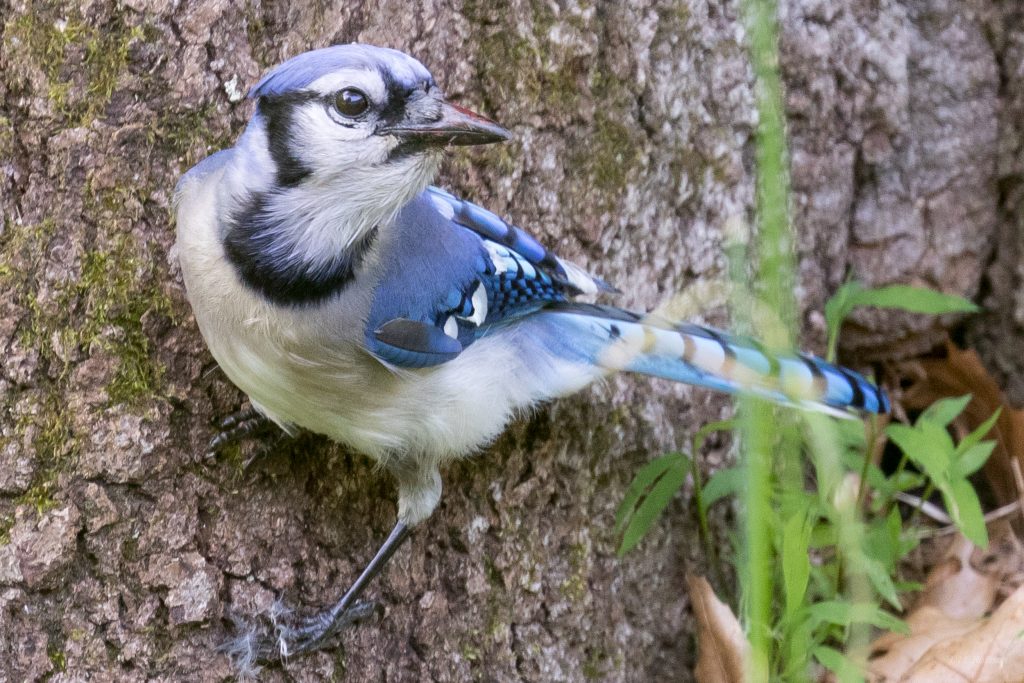
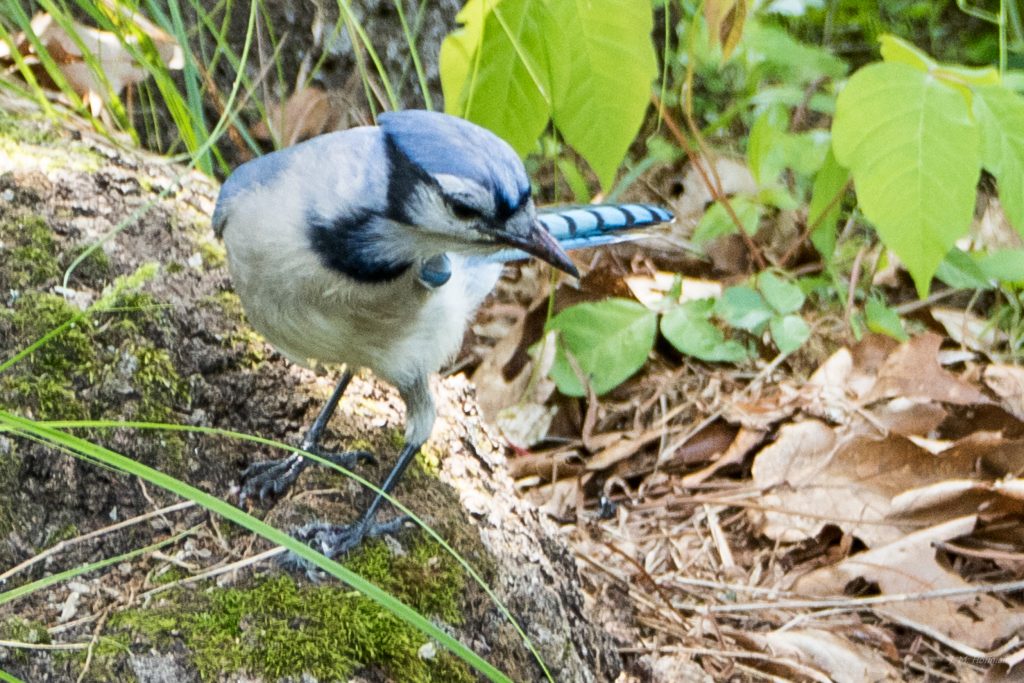
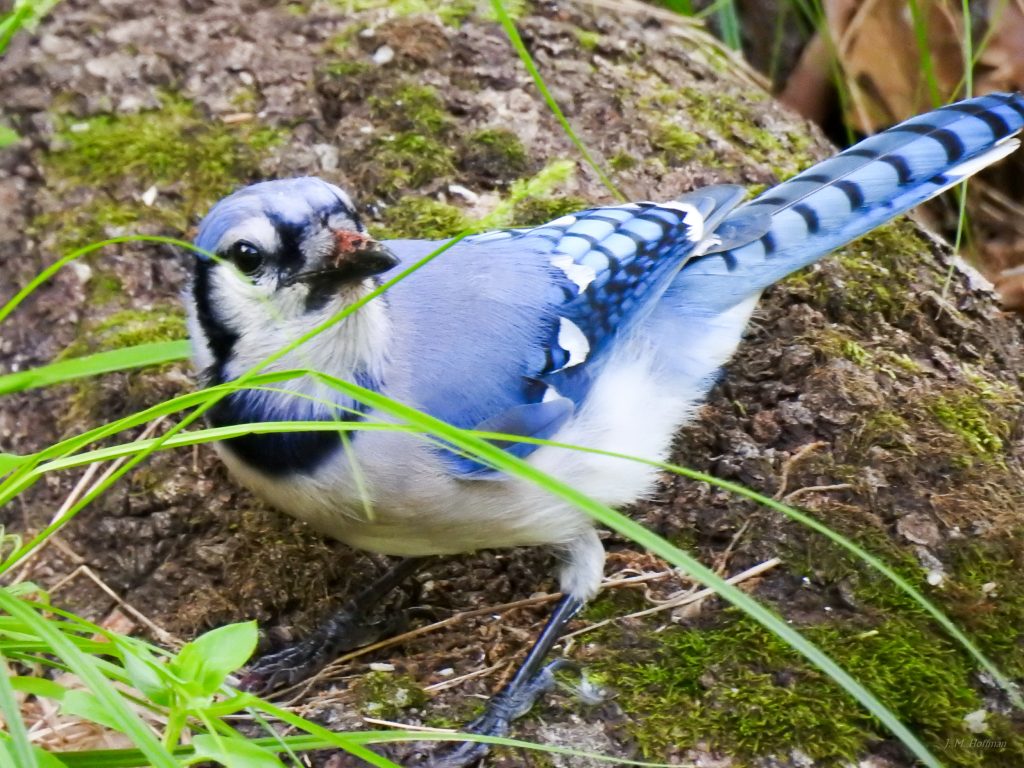
None is these is stellar, but here — amazingly — the humble Nikon fares about as well as the lofty Canon, with the Panasonic coming in a distant third. What gives the Nikon the advantage is its 2,000mm (equiv.) lens, which makes up for the tiny sensor and any imperfections in the lens. Even at ISO 1600 there’s a surprising amount of detail, because the bird fills the Nikon frame. By contrast, on the Canon — even at an equivalent of 640mm — I had to throw away 88% of the frame. So the Canon lens/sensor combo has to extract nine times as much detail as the Nikon to compete. And it does. But it doesn’t pull significantly ahead.
Results
So in terms of image quality, for wildlife, we see that:
- Nothing beats the Canon combo, which wins 1st place.
- The Panasonic does a very good job up to its 400mm reach, coming in a surprisingly close 2nd at one-fifth the cost.
- The Fuji does a stellar job, but lacks the reach you’ll usually want for wildlife.
- The Nikon can’t compete with the Canon or the Panasonic except at great distances, where it outperforms the Fuji and the Panasonic, coming in a close 2nd to the Canon.
Other Considerations
So far we’ve only considered image quality. But that’s not all there is to a camera.
The Canon and the Fuji offer manual zooming on their lenses. That is, to zoom in and out you manually twist a lens control, which means that you can span the full zoom range in a fraction of a second, and you can find precise framing just as quickly. The Panasonic and the Nikon, by contrast, rely on electronic zooming, which is slow and imprecise. For me, this is the biggest drawback of the Panasonic. If Panasonic ever makes a Mark II version of the FZ1000 with a manual zoom, I’ll buy one.
Another important part of the camera is the viewfinder. The Canon features an optical viewfinder, so looking through the camera is like looking through a telescope. You see everything as fast as your eye can keep up. The Fuji has an electronic viewfinder, but it’s the best in the industry. It’s almost as good as an optical viewfinder, and in at least one way, better: In low light, it’s like having night vision. But the Panasonic and the Nikon have lower-quality electronic viewfinders. The Panasonic is okay, to my eye, but just barely. The Nikon is pretty bad, in my opinion.
Autofocus is a third quality to consider. Again, the Canon comes out ahead, followed by the Fuji, then the Panasonic, with the Nikon once more in last place. (But it matters less for the Nikon, because so much is always in focus.)
These three taken together — the kind of zoom control, the quality of the viewfinder, and the autofocus speed — work in tandem. With the Canon you’ve got a much, much better chance of getting a good shot of a moving animal than with the Nikon, with the Fuji coming in close to the Canon, and the Panasonic not all that far in third place.
It took me a long time to get a shot of a Blue Jay with the Nikon, for example, because the jay had moved by the time I framed most of the shots. By contrast, with the Canon setup, I was able to get this shot of an owl landing (in Tucson a couple of years ago):
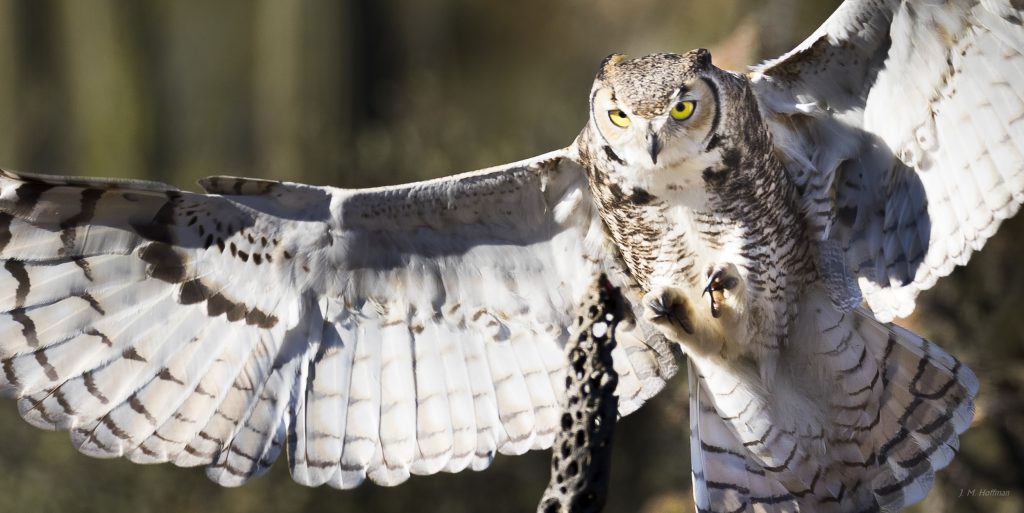
In addition to the viewfinder, all four cameras let you use a screen to frame your shot. The Canon’s screen is firmly attached to the back of the camera, so other than personal preference there’s not much reason to use it. The Fuji’s screen can point up or down, so it’s useful for taking shots when the camera is over your head or low to the ground. But the screen on the Panasonic and the Nikon can be positioned at any angle, so you get even more flexibility.
Going back to image quality, the Canon, Fuji, and Panasonic all offer “raw” files in addition to JPGs. These raw files contain more information than a JPG can, so you have more flexibility shaping your final photo in terms of color, lighting, noise, and grain. The Nikon only offers JPG files. (The Fuji offers JPGs that I think are the best available, at any price.)
On the other hand, the expanded depth of field you get with the Panasonic and especially the Nikon means you have a better chance of getting your subject in focus. With the Canon, in particular, you might find that you focused on the nose and the eye is out of focus, while they’ll probably both be in focus on the two consumer cameras.
And there’s the matter of size. The Canon is huge compared to the other three. Here we see, left to right, the Canon, Fuji, Nikon, and Panasonic:
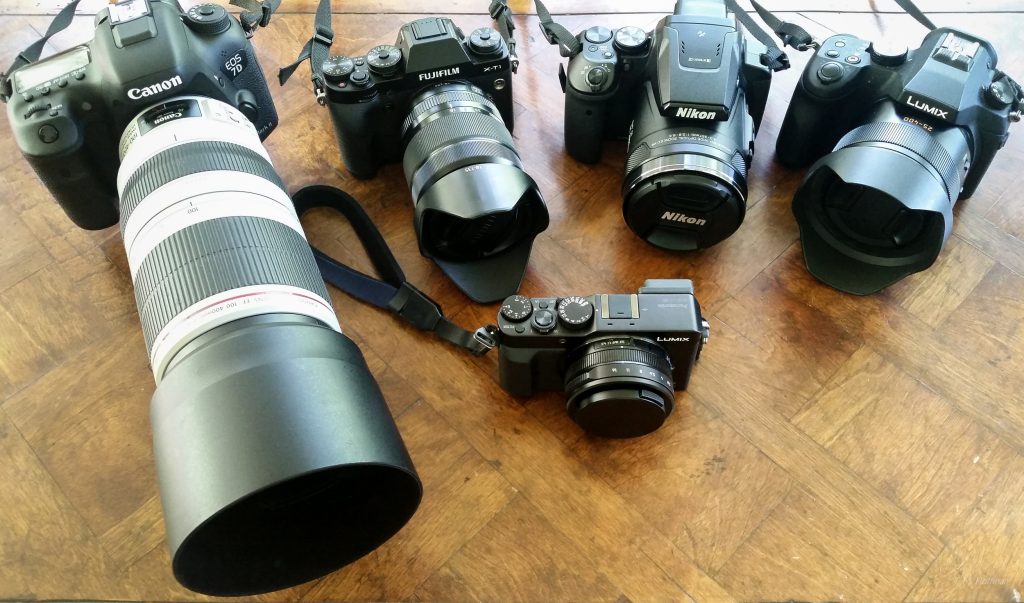
(The fifth camera in front is my current go-everywhere camera, the Panasonic Lumix DMC-LX100. I didn’t use it at the zoo, but I did in my travel camera tests.)
And here’s how much each combination weighs:
- Canon combo: 5.46 pounds (2.48 kg)
- Fuji combo: 2.05 pounds (0.93 kg)
- Nikon: 2 pounds (0.91 kg)
- Panasonic: 1.83 pounds (0.83 kg)
The Canon weighs about as much as the other three together. (And costs more than those three combined.)
And as good as the Canon combo is, it starts as an equivalent of 160mm. It’s useless for wide angle shots, family portraits (except maybe the family next door), etc. So if you travel with the Canon, you’ll need something else for more general photography. And forget about using it for a selfie.
The Bottom Line
I started by asking how much better pro Canon or Fuji setups are than consumer-grade options. As expected, the Canon and the Fuji outperform the cheaper competition in almost every regard. But you’ll need two cameras if you want to cover wide-angle and telephoto shots.
The Panasonic, on the other hand, covers everything, and does it well enough that it’s a surprisingly serious competitor.
The Nikon falls short of the Panasonic in most regards, but at the far end of its zoom range it’s pretty incredible.
Equipment
For this trial I rented two cameras from Lensrentals. I’ve used them before, and have always been very happy, so if you’re looking to try out equipment, or if you only need something for a little while, give them a shot.
And here’s the equipment in this post:
- Canon 7D Mark II Body
- Canon 100-400mm “L” Mark II lens
- Fuji X-T1 18-135mm lens
- Panasonic Lumix DMC-FZ1000
- Nikon Coolpix P900
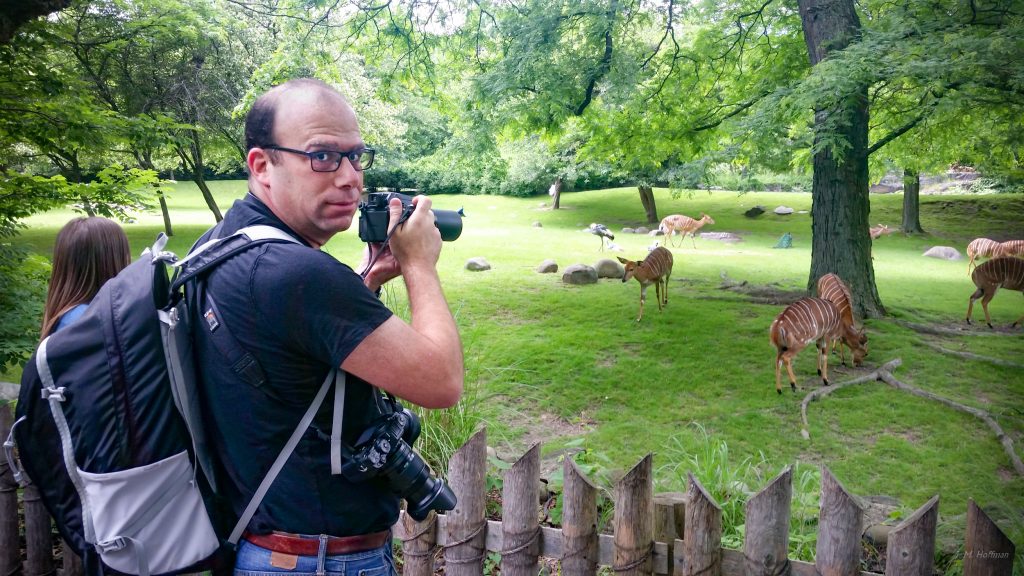
[Originally published on J.M. Hoffman Photography in June 2017.]
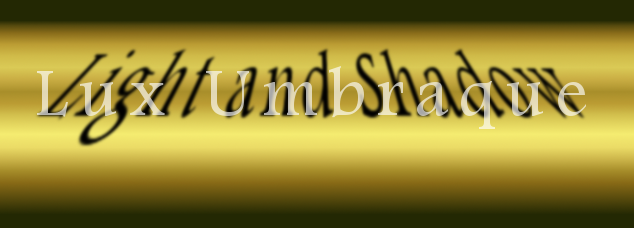



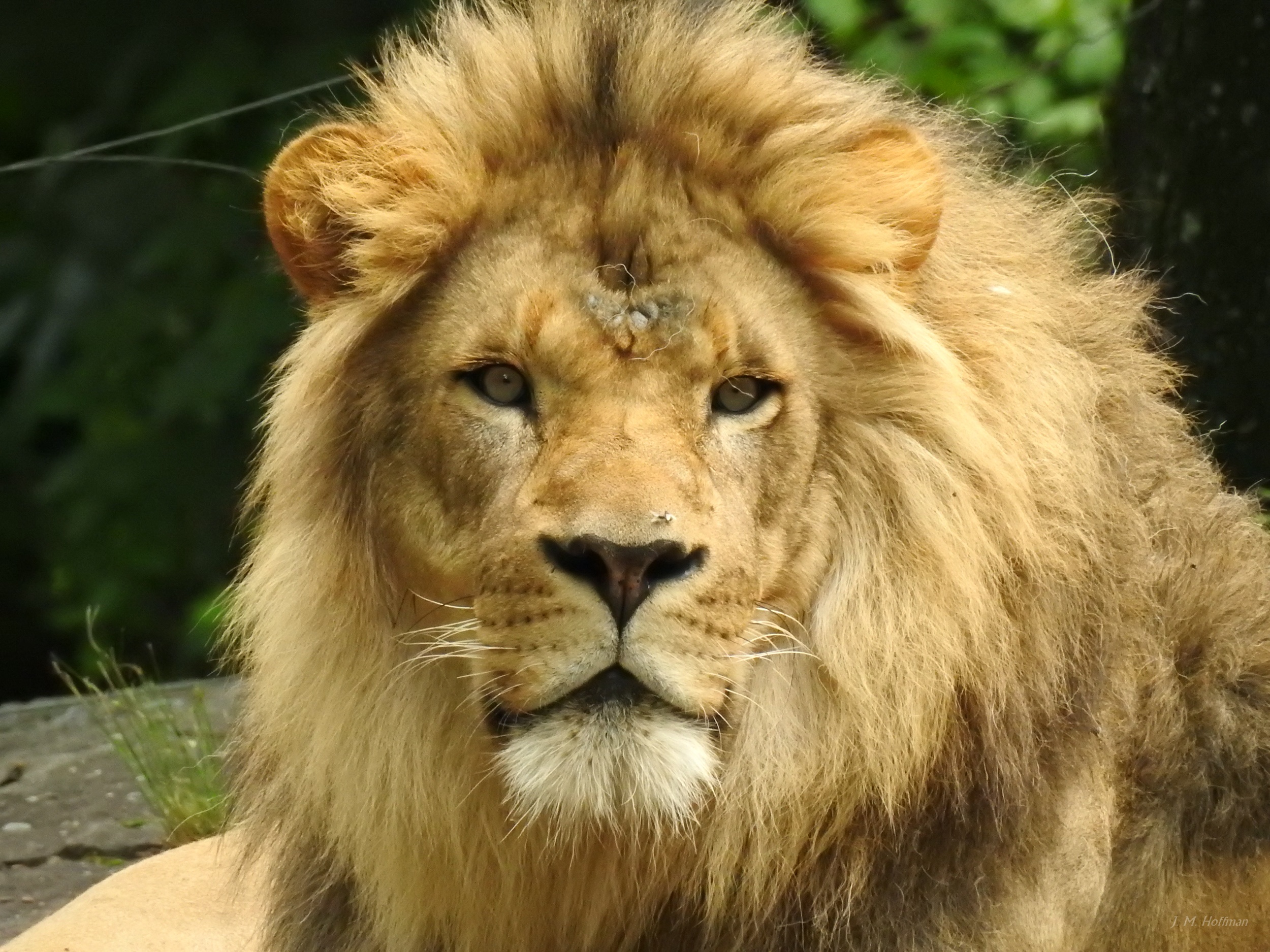
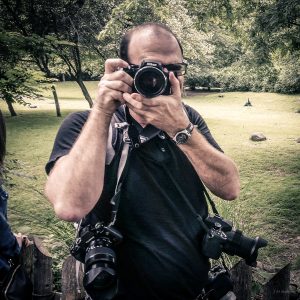
5 thoughts on “Can You Tell The Difference? Wildlife Cameras”